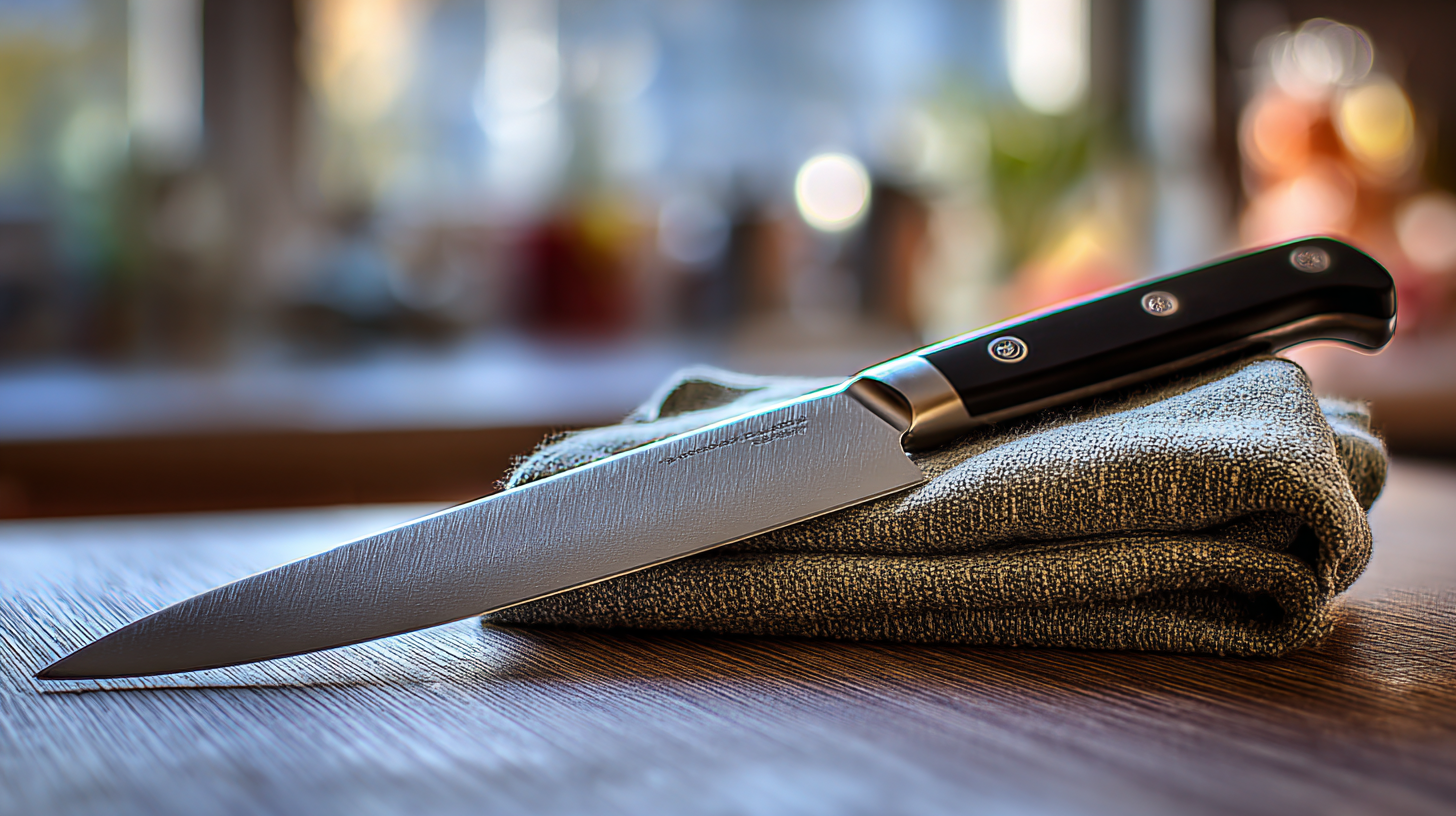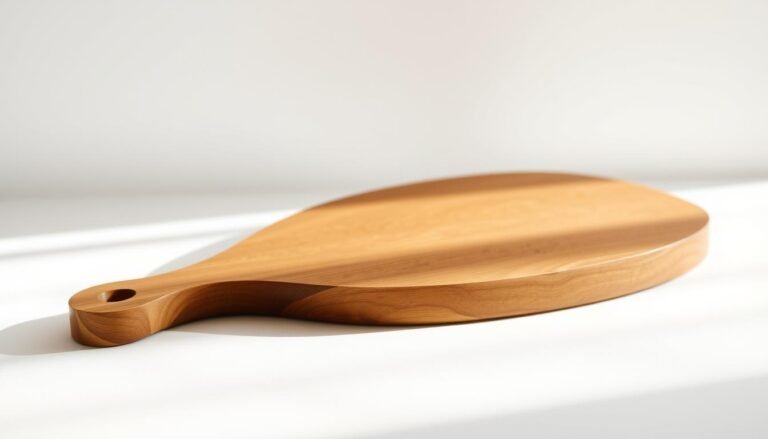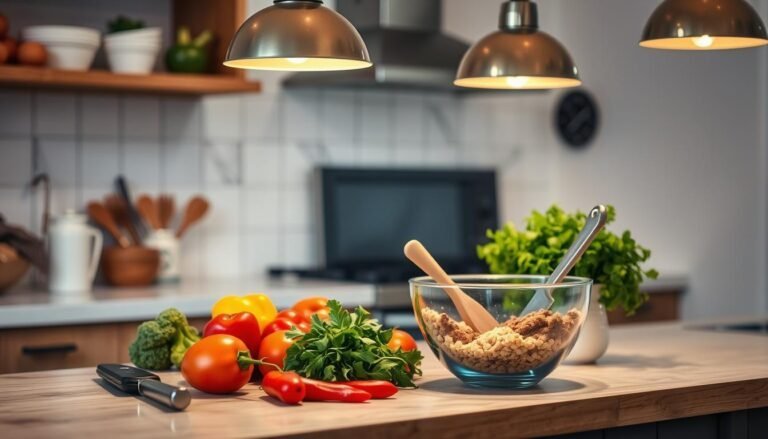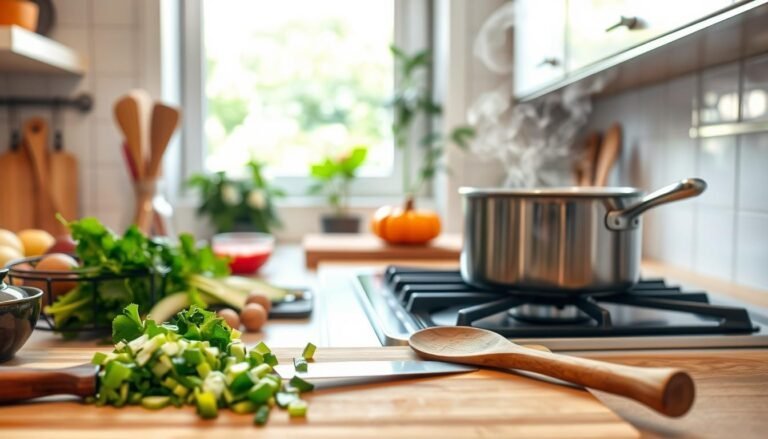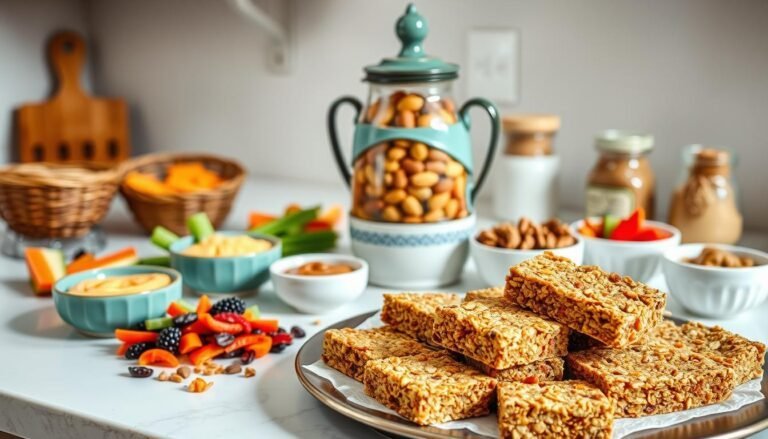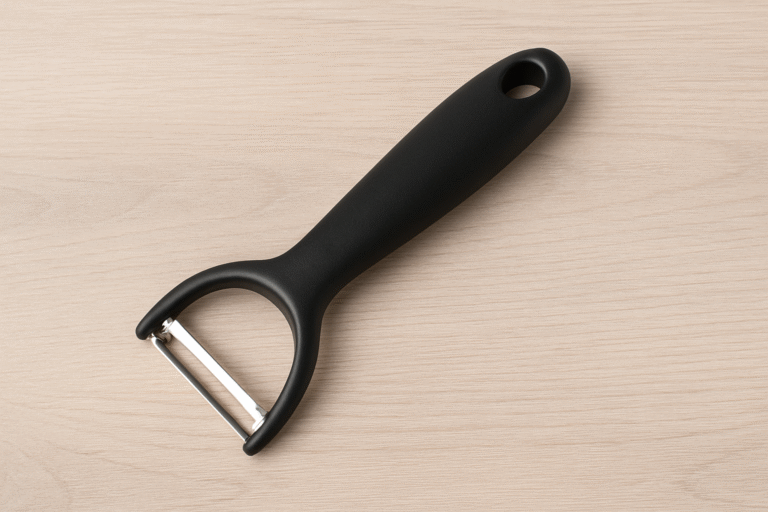Disclosure: This Post Contains Affiliate Links; We earn a commission on purchases.
A high-quality kitchen knife is key for fast food prep. It boosts cutting skills, offers precision, and makes cooking fun. Many say a good chef’s knife makes kitchen tasks easier.
Having the best chef’s knife greatly improves cooking. It lets you make precise cuts and chop efficiently. This shows why getting a top-notch kitchen tool is worth it.
Key Takeaways
- A good chef’s knife boosts cutting skills and precision.
- It makes food prep tasks simpler, making cooking more fun.
- Investing in a high-quality kitchen knife enhances cooking.
- Precision and efficiency are big pluses of a top chef’s knife.
- A best chef’s knife is key for quick meal prep.
The Essential Tool in Every Kitchen
The chef’s knife is key in cooking, loved by pros and home cooks alike. It’s versatile and helps a lot in making meals.
What Defines a Chef’s Knife
A professional chef knife has a balanced design, sharp edge, and comfy handle. These parts work together to make it great for many kitchen jobs.
Why Every Home Cook Needs One
Getting a premium chef knife or a chef knife set boosts a home cook’s skills. It helps with chopping, slicing, and mincing food.
Versatility in Food Preparation
A chef’s knife does many things, like:
- Chopping veggies
- Slicing meat
- Mincing herbs
It makes cooking easier and faster.
Foundation for Cooking Skills
Learning to use a chef’s knife is key to getting better at cooking. It helps cooks work better and faster, improving their cooking skills.
Anatomy of a Quality Chef’s Knife
The anatomy of a chef’s knife shows its importance. It’s a mix of design, materials, and skill.
Blade Materials and Construction
The blade is key. Its material and build affect how it works. You have to choose between stainless steel and carbon steel.
Stainless Steel vs. Carbon Steel
Stainless steel chef knives are great for not rusting and being easy to clean. Carbon steel knives are sharp and keep their edge well. Stainless steel is durable, but carbon steel cuts better.
Damascus and Pattern-Welded Blades
Damascus and pattern-welded blades stand out for their looks and quality. They’re made by stacking different steels. This makes a strong, sharp knife that looks amazing.
Handle Design and Ergonomics
The handle is as important as the blade. It must be comfortable and let you control the knife. A good handle makes cooking easier, even when you’re using the knife a lot.
- Ergonomic design reduces fatigue
- Material choice affects grip and comfort
- Shape and size influence maneuverability
Balance and Weight Distribution
The balance and weight of a knife matter a lot. A well-balanced knife, like a Japanese chef knife, feels like part of your hand. It makes cutting easy.
When picking a top chef knives, think about balance, blade material, and handle design. Each part adds to the knife’s quality and how well it works.
Types of Chef’s Knives for Different Cooking Styles
Chef’s knives come in many styles, from Western to Japanese. Each is made for different cooking ways. The right knife can really help a cook, whether they’re slicing thin or cutting tough stuff.
Western (German/French) Chef’s Knives
Western knives come from Germany and France. They’re tough and can do many things. Their curved blade helps with chopping and mincing.
Characteristics and Best Uses
The Western chef’s knife has a wide blade and strong build. It’s great for chopping meat, veggies, and herbs. Its curved edge makes chopping easier and faster.
Japanese Chef’s Knives
Japanese knives are famous for being sharp and precise. They have a straighter edge than Western knives. This is perfect for making clean cuts.
Gyuto, Santoku, and Nakiri Styles
The Gyuto is a versatile knife, like the Western chef’s knife but sharper. The Santoku has a flat edge and is good for chopping and slicing. The Nakiri is for cutting veggies with a straight edge.
Hybrid and Contemporary Designs
New designs mix the best of Western and Japanese knives. They’re strong like Western knives and sharp like Japanese ones. These knives are for many cooking styles and tastes.
Choosing a chef’s knife depends on what you like, how you cook, and what you do most. Whether you’re a pro chef or just cooking at home, the right knife makes a big difference.
How a Premium Chef’s Knife Transforms Your Cooking Experience
A premium chef’s knife changes the kitchen game. It offers unmatched precision and control. This tool makes cooking faster and more efficient.
Precision and Control in Cutting Techniques
A premium chef’s knife is perfect for all cutting tasks. It has balance and weight distribution for smooth cuts. This reduces accidents and boosts kitchen efficiency.
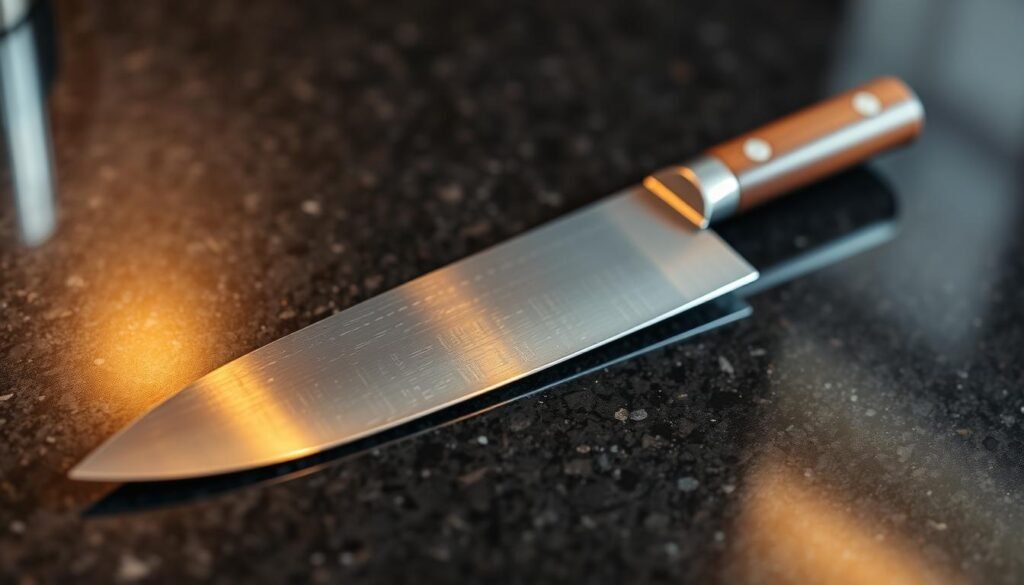
Efficiency and Time-Saving Benefits
Home cooks and chefs get more done with a premium chef’s knife. Its sharpness and design make cutting quick and easy. This saves time in food prep. For more on kitchen knives, check out The Role of a Kitchen Knife in Culinary.
Versatility Across Different Ingredients
A premium chef’s knife works well with many ingredients. It’s great for proteins, vegetables, and herbs, thanks to its precision and control.
Proteins, Vegetables, and Herbs
This knife is good for slicing proteins, chopping veggies, and herbs. Its sharp blade makes clean cuts, keeping ingredients intact.
Quick Meal Preparation
The knife’s efficiency and precision are key for fast meal prep. It streamlines cutting, helping cooks prepare meals quickly. It’s perfect for busy people and chefs.
Proper Care and Maintenance of Your Chef’s Knife
Proper care and maintenance are key to extending the life of your chef’s knife. A well-maintained high-quality kitchen knife performs better and lasts longer. It’s a valuable tool in the kitchen.
Sharpening Methods and Frequency
Regular sharpening is key for your chef knife set. Sharpening frequency depends on how much you use it. A stainless steel chef knife should be sharpened every few months.
There are many sharpening methods. You can use a whetstone, sharpening steel, or electric sharpeners.
Cleaning and Storage Best Practices
Clean your chef’s knife right after use. Store it properly to prevent damage. Hand washing with mild soap and drying well is best.
Store it in a knife block, magnetic strip, or protective sheath. This keeps the blade safe and prevents accidents.
Extending the Lifespan of Your Investment
To make your high-quality kitchen knife last longer, avoid cutting on hard surfaces. This can damage the blade. Regular maintenance, like sharpening and proper storage, keeps your stainless steel chef knife in top shape for years.
Conclusion: Investing in Your Culinary Journey
Getting a top-notch chef’s knife is key to better cooking. A premium chef knife boosts your skill and makes cooking fun. It makes your meals better and more enjoyable.
Top chef knives make cutting easier and more precise. This means you can make amazing meals. Choosing the best knife can turn simple dishes into special ones.
When picking a premium chef knife, look at the materials and how it feels. It should fit your cooking style. The right knife lets you handle all kinds of food, from herbs to meat.
Check out the best chef knives and see how they change your cooking. Whether you’re a pro or just starting, a great knife is worth it. It will make your cooking better over time.
FAQ
What makes a chef’s knife a must-have in the kitchen?
What are the benefits of investing in a premium chef’s knife?
What is the difference between stainless steel and carbon steel chef’s knives?
What are the characteristics of a Western-style chef’s knife?
What are the benefits of a Japanese-style chef’s knife?
How often should I sharpen my chef’s knife?
What is the best way to clean and store my chef’s knife?
Can I use a chef’s knife for cutting different types of ingredients?
What is the importance of balance and weight distribution in a chef’s knife?
Are hybrid and contemporary chef’s knife designs worth considering?

With a passion for making good food easy, Ryan focuses on tips, tricks, and approachable advice for anyone who wants to eat well without spending hours in the kitchen. Whether you’re prepping lunchboxes, feeding a busy family, or just need something tasty in a pinch, Ryan’s here to help you keep it quick and simple—one bite at a time.
Subscribe to Our Newsletter

